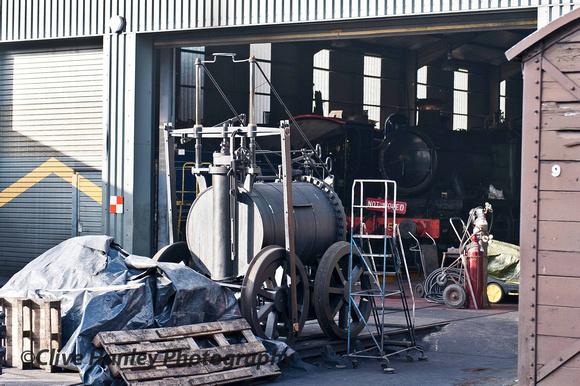Catch Me Who Can was the fourth and last
steam railway locomotive created by
Richard Trevithick, (after those at
Coalbrookdale,
Penydarren ironworks and
Wylam colliery). Built in 1808 by
Rastrick and
Hazledine at their foundry in
Bridgnorth,
England. It was demonstrated to the public at a "steam circus" organized by Trevithick on a circular track in
Bloomsbury, just south of the present-day
Euston Square tube station in
London.
The locomotive reached a top speed of 12 mph (19 km/h). It proved too heavy, however, for the relatively brittle cast-iron rails then in use and Trevithick closed his exhibition after a broken rail caused a
derailment.
The mechanical arrangement of
Catch Me Who Can was simpler than the previous locomotives. The horizontal cylinder, flywheel, and geared drive were replaced by a vertical cylinder, still encased within the boiler, driving one pair of wheels directly by means of connecting rods. The boiler was Trevithick's usual return-flue type, with an internal
firebox.
A replica is under construction by the Trevithick 200 charity at the
Severn Valley Railway workshops, close to the site where the original locomotive was built. It is now sufficiently complete, as of March 2010, to turn over when set up on blocks, but not yet to move itself along.


